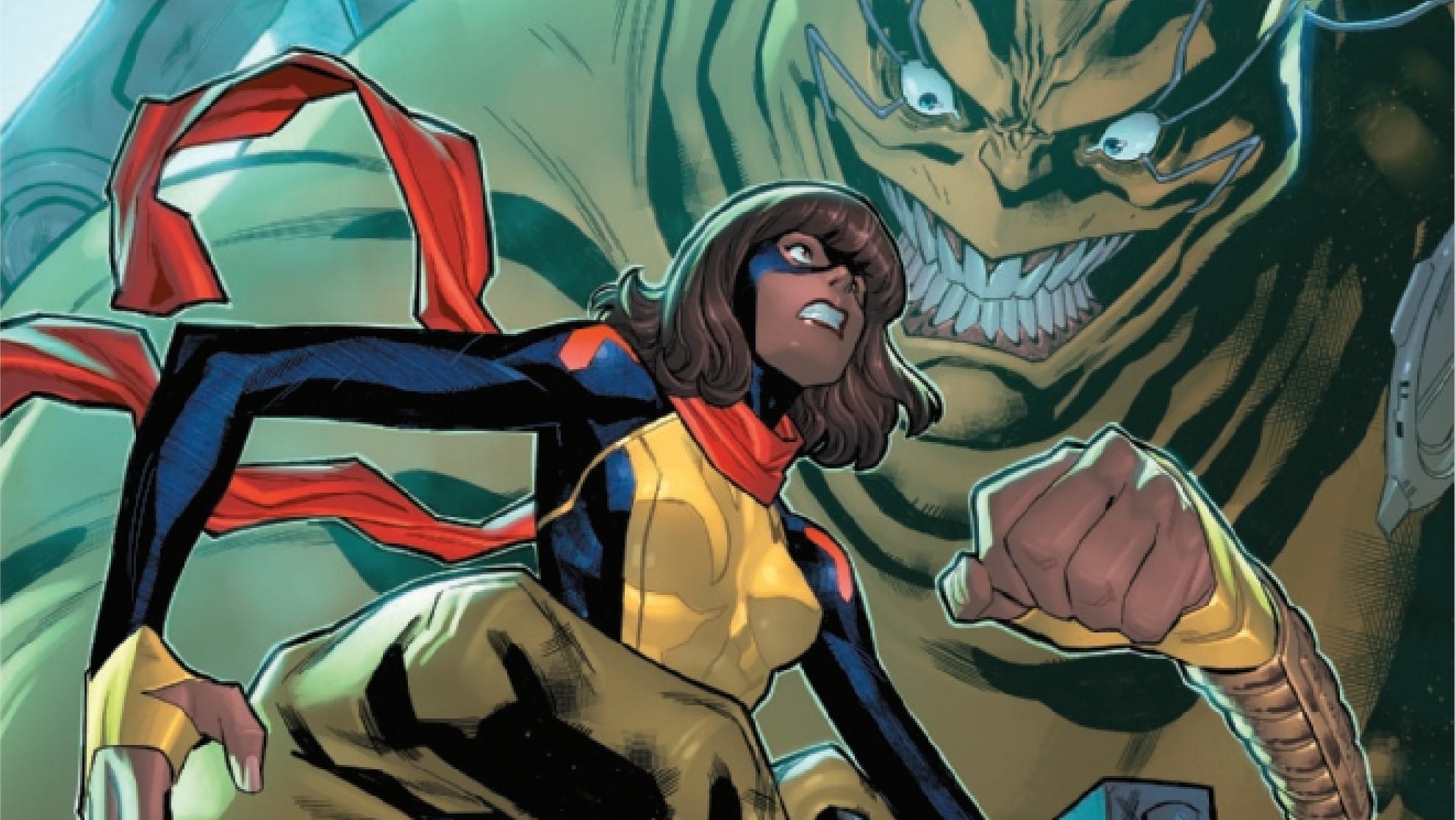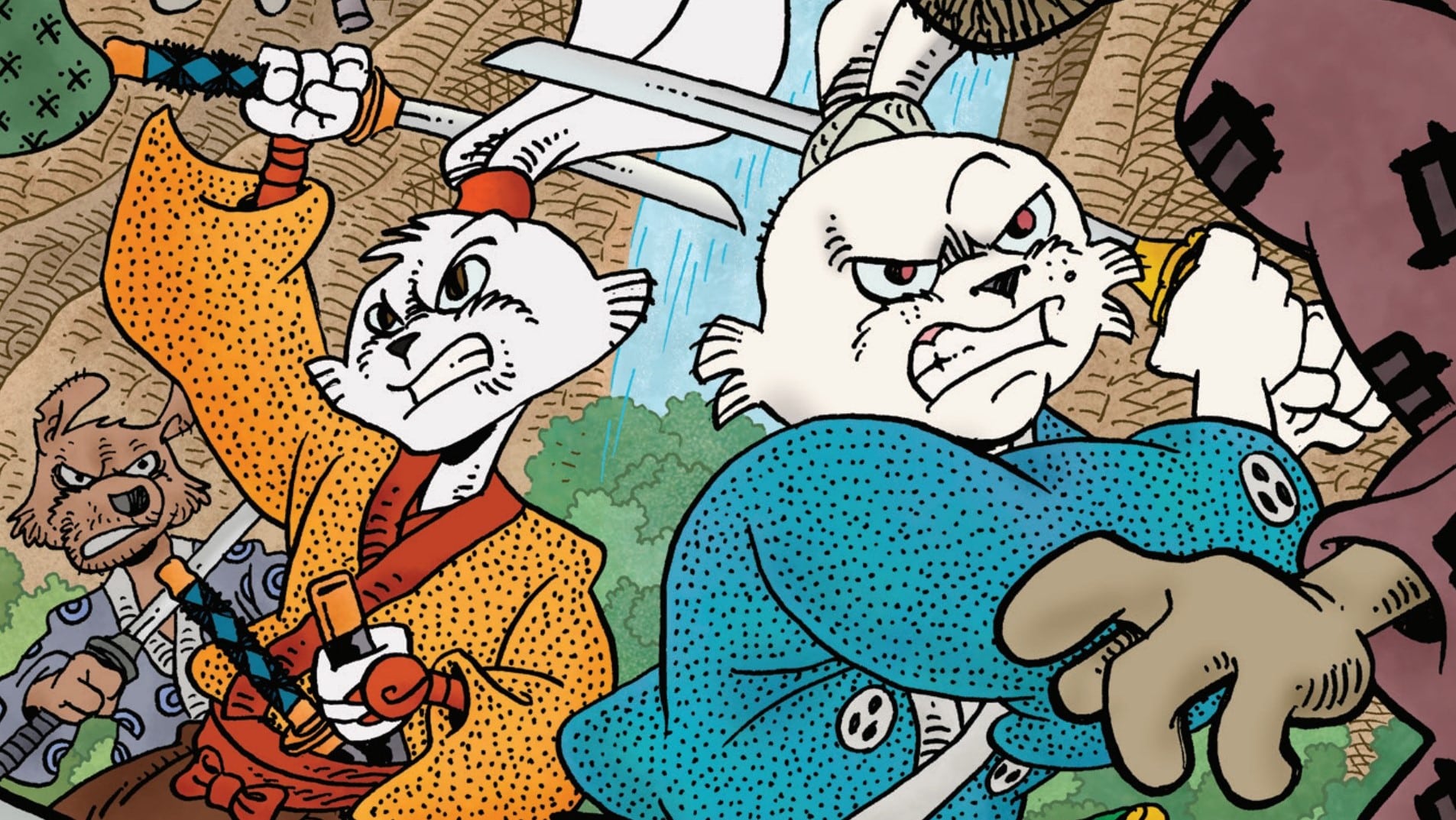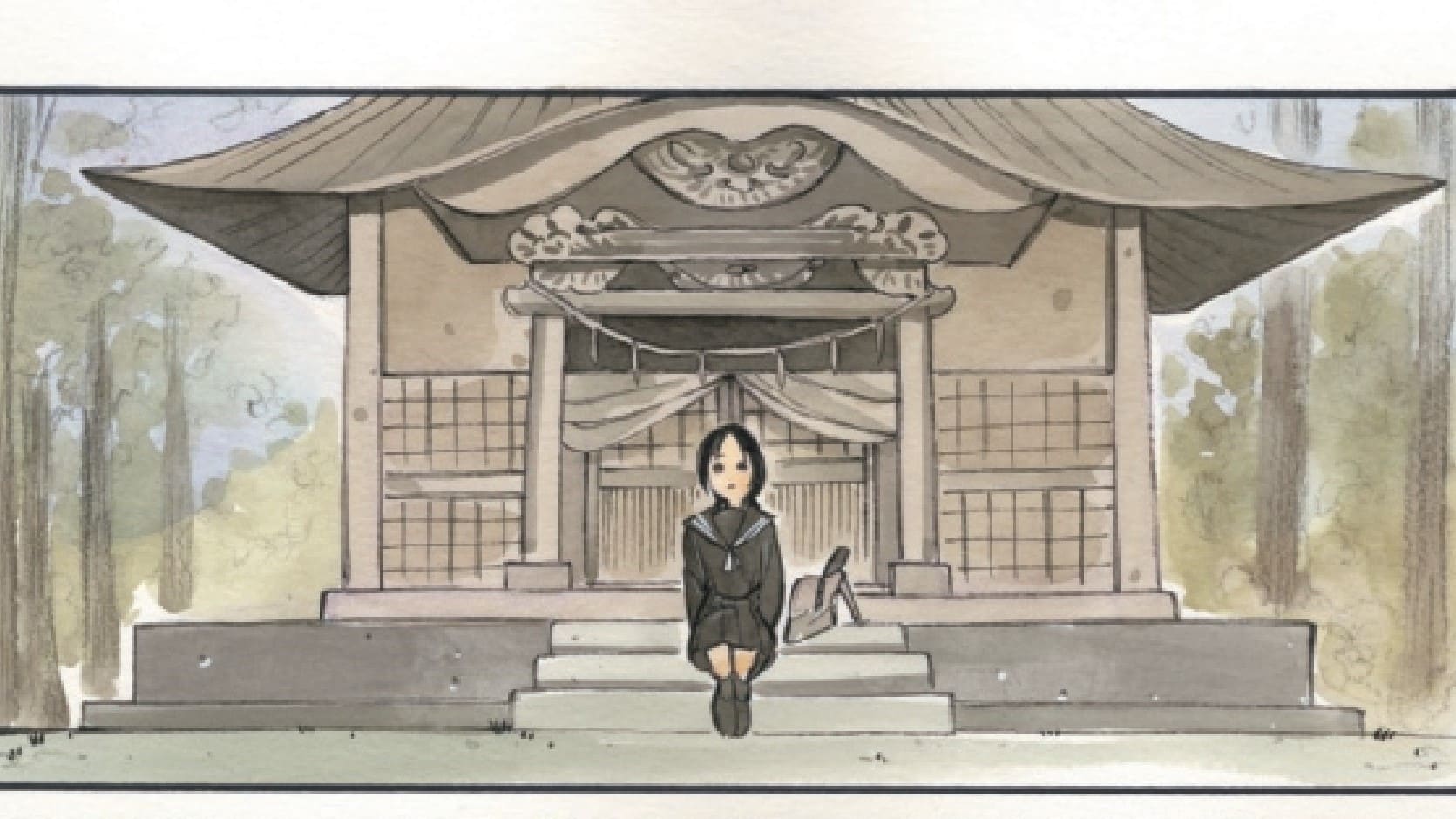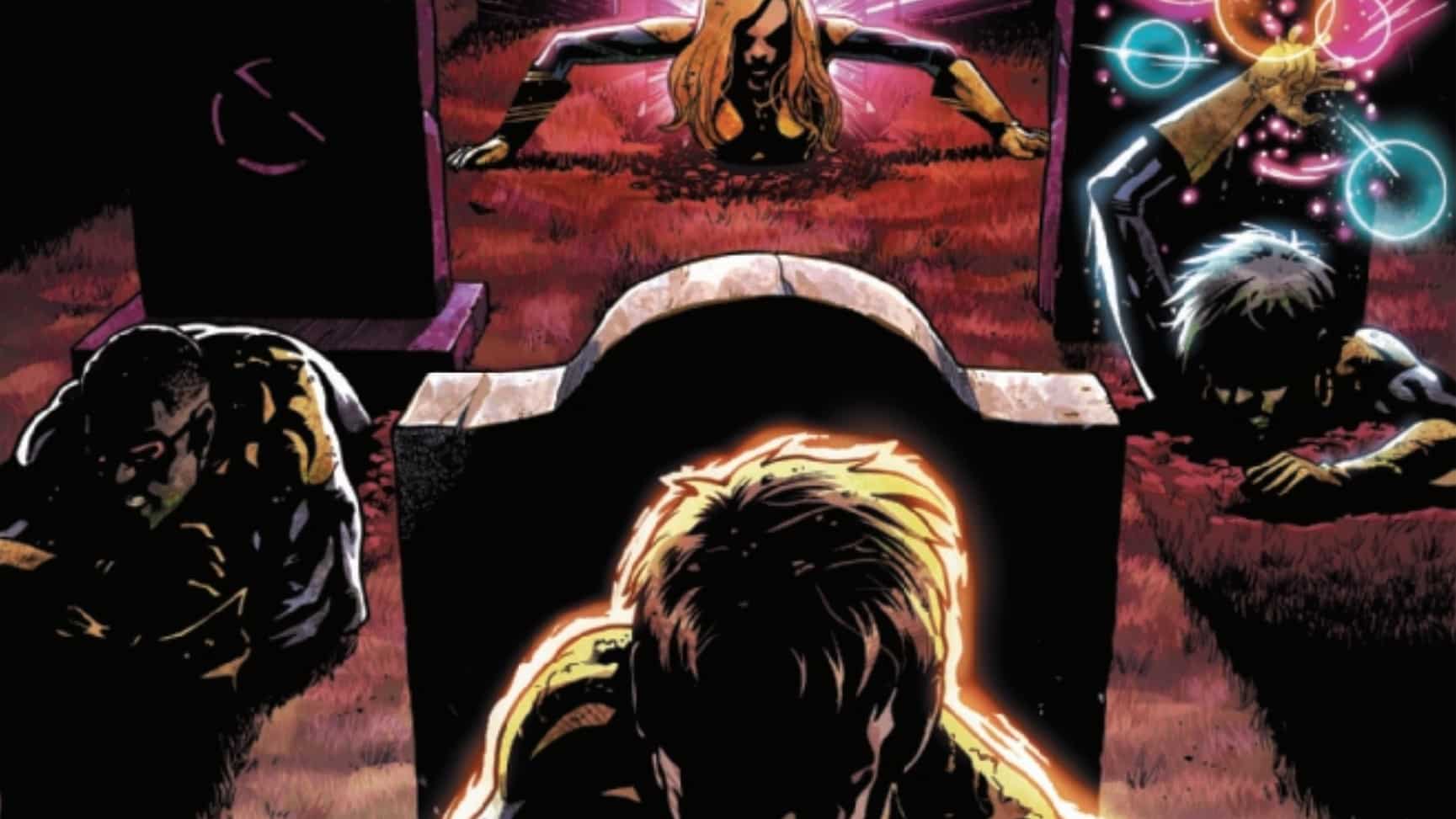Die #18: Bleed, Part III: Lines and Veils: As the party delves further into the dungeon in the Realm of Thirteen, Sol finally remembers and retells his story. Written by Kieron Gillen, drawn by Stephanie Hans and lettered by Clayton Cowles.
Mark Turetsky: Hey, Corey! We’re one step closer to finishing our exploration of the world of DIE.
Corey Smith: That we are, Mark — and what a step it was! For as much as we were discussing Sol’s characterization in our coverage of Issue #16, I wasn’t expecting him to get so much focus this close to the endgame (which just goes to show I should read a solicit once in a while). How did you feel about this glimpse into our favorite Fallen’s history?
A Conspiracy Unmasked

Mark: We learn an awful lot about Sol this month. We’ve seen so little of the intervening time between our party’s two visits to DIE, and prior to this we learned absolutely nothing about Sol’s intervening years, but we get a bit of one and quite a lot of the other here. Of particular note is that we get an entire repeated page from way back in issue #2, where they’re doing the “no place like home” ritual and Sol gets grabbed by the Grandmaster.
The captions are an echo of that page from #2, but there’s a crucial thing from #2 that I want to point out: Ash introduces the story of Sol getting left behind, saying, “I could make you believe whatever I want, but I think this is the truth.” Now we know that’s a lie of omission. It’s not the truth, or at least, it’s not the entire truth, and Ash knew that when she told the reader. It makes me wonder what else she’s leaving out of her story.
Corey: I’m wondering the same thing! Unreliable narrators who lie to the audience are nothing new, but it’s always interesting to see ones who lie to themselves. It’s tough to know how much of the hesitation is true, and how much is just a moment played up in Ash’s head, amplified to something more than it really was, but my takeaway is that she’s absolutely right. If that makes Sol’s death Ash’s fault, I’m a little more murky — I think it’s telling that if the sequence in Issue #2 was a lie of omission, Ash’s immediate response when pushed is to have the party gag her again. It’s also worth pointing out that the hesitation may have been inevitable, and out of her control — after all, it’s pretty clear at this point that DIE itself is dedicated to its own creation and propagation, through both time loops and manipulation of its players. It’s really made me want to go back and reread the series so far, and see what new weight this revelation lends to all of Ash’s narration.
Mark: There are a lot of callbacks to the first two issues. If you’ll recall, Sol says he killed the Grandmaster (another lie) and took the Grandmaster’s D20 and added it to his eye socket (he had his own D20 in the other one). We now know that in fact the Grandmaster killed him and instead of the Grandmaster’s die, he put in a toy.
Also telling is that in the repeated page, in issue #2 the caption says, “There was nothing we could have done,” and it gets replaced here in issue #18 with “There was nothing I could have done. Except not pause.” So it’s a reframing of Sol’s plight not as something the party did to him, but as something Ash herself did to him.
There’s also another hesitation on Ash’s part in issue #2. After Sol challenges the party to defeat him and disappears, Matt chides Ash, saying she “could have used the voice,” to which Ash replies, “I … I didn’t want to turn this into a war. Not yet.” In the moment, Ash’s narrative caption focuses on the “not yet,” but rereading it, I’m more interested in the hesitation. We know now that she’s thinking about her moment of hesitation from 25 years prior, and we get that same hesitation. And of course, this issue stops short of explaining why she hesitates (we’ll likely find that out next month), but I think it’s for the same reason.
Corey: That makes a hell of a lot of sense. If I’m being honest, this is the most excited I’ve been for the next issue to come out — this absolutely changed the way I think about the entire series. For as much as Ash has been the viewpoint character, as much as she’s been our only lens to this world, this issue has been full of reminders that we only know her as far as she (and Gillen) allowed us to. Gillen’s notes at the end indicate that if this issue was “The Sol Issue,” then the next one will be “The Ash Issue,” and the fact that he wouldn’t say the same about any of the others is fascinating. I’ve got a lot to say about all of the implications of that, but we should probably get into the events of this issue first.
A Long-Expected Party

Mark: We kinda skipped the opening scene in our excitement, didn’t we? There’s this scene, set just after they had returned from their first venture into DIE, of Dominic sneaking Angela into a pub in order to meet up with Chuck. He describes being a big brother as a role he slips into again, which is a nice choice of words on Gillen’s part. There are, as they say, a lot of ways to read that little phrase in this context.
Corey: It’s loaded with implications, that’s for damn sure. The most obvious aspect, or at least the one I think we’re meant to read the most into, is the obvious gender aspect of Dominic in our world compared to Ash in DIE. Being an older brother (at least in my experience) comes with a lot of performance, in ways that mesh pretty clearly with Ash’s memories on the page — things you’re supposed to know, trouble you’re supposed to get into, ways you’re supposed to be available for your sibling. That last one is tricky, unfortunately — our experience with Ash doesn’t paint the picture of someone who’s great at being emotionally available in the first place, and the geas preventing them from talking about their time in DIE doesn’t help. Of course, it’s worth pointing out that Ash is the one who set up the geas in the first place — is it really so strict that it would prevent him from warning Angela about addiction, or was it simply a convenient excuse to avoid a difficult conversation? Even before the doubt this issue casts on Ash, I wouldn’t have been sure.
DIE’s creative team as a whole has always been an obvious highlight of the book, but these first three pages are an absolute standout. Hans is a master of expression, and the regrets shown by the Ash siblings come through beautifully. Cowles’ choices in lettering are worth calling attention to as well — I usually fall into the trap of not noticing lettering unless it’s bad, but the more I’ve learned about the craft, the more I’ve started to notice what makes it work (If that’s something you’re interested in learning about, I highly recommend following Ariana Maher on Twitter, who has talked a lot about the lettering process).
Cowles is very deliberate with his placement, and does a fantastic job of drawing the eye where it needs to go. The book’s third panel, where Ash pauses before allowing Angela a drink, is done beautifully, and the placement of “Just … one.” couples with Hans’ art to sell his hesitation. Another moment that stood out to me in that regard is the unmasking of the Grandmaster — while his speech had previously been an inverted, white-text-on-black-background version of the bubbles the rest of the living cast uses, once he unmasked and revealed his true identity of DIE itself, the bubbles switch to polygons, like the outline of a die. What’s more, the all-caps and bolded text both lend the sense of gravity and portent that Sol feels any good NPC should have, and, coupled with the art, makes it seem like he’s no longer being muffled by his helmet. It’s a neat visual trick, and part of what makes this one of my favorite creative teams.
Mark: I hadn’t noticed the D20-shaped word balloons! There’s another thing I’d like to point out on that page: We do that impressive recursive zoom into the Grandmaster’s head, where we see the world of DIE, we zoom in, we see the island, the cave and then back to the tomb where we started. The naturalistic, sunlit shot of the island, where it’s a lovely leaf-green, is one of the only times I can think of where we get this Earthlike coloring. Usually, Hans colors DIE with martial red colors, or gloomy blues; even when we see scenes back in the real world, they’re usually at night. It’s just the cursed island in the Realm of Thirteen, but it also reminds us of the stakes involved. It’s not just the little island, it stands for the whole world that’s about to be swallowed up by the monster.
I’d also like to touch on the framing device of Sol’s story: the continuing Lord of the Rings pastiche, where we get our version of Balin’s tomb, except it’s now Sol’s tomb. And instead of The Book of Mazarbul, it’s Sol’s journal.
Corey: I swear, at some point I’m gonna finally finish reading Lord of the Rings, and so much more of DIE is going to click into place for me. I’m probably the only person who reads the latter but hasn’t gotten through the former, but could you break that down for me?
Drums in the Deep

Mark: I’m glad you asked, Corey (and I didn’t railroad you at all)! It’s more or less just as Ash describes it in her narration: The Fellowship of the Ring enters Moria through the Doors of Durin, and Moria is empty. Creepily so. They finally make it to a tomb, it’s Balin’s tomb. They find a dusty old book there. In the fandom, it’s called The Book of Mazarbul, but evidently “mazarbul” just means “records,” so it’s like saying “The Daily Newspaper” as if it’s a big important name. Anyway, the book tells the story of the dwarves of Moria and how they died.
Now, there’s a whole generation whose first exposure to these characters is The Lord of the Rings movies. To them, Balin is just Gimli’s cousin that he’s always going on about. But to the original readers, they would know the dwarves of Moria as being in Thorin’s Company from The Hobbit. The Hobbit is, despite cinematic efforts to make it otherwise, a children’s book. It had been around for nearly 20 years when The Fellowship of the Rings was published. And the Book of Mazarbul describes the deaths of Óin, Balin and Ori. To someone who had read The Hobbit as a child, these are three happy dwarves who sing songs and wash dishes. They’re not the sort of people who get violently massacred. To be hyperbolic for a moment, it’s like if you found out as an adult that Winnie-the-Pooh, Piglet and Eeyore all died horribly. It’s a moment in The Lord of the Rings that signals to the readers that they’re no longer reading a children’s book.
And that’s really reflected in Sol’s situation here. In his journal, he writes, “Mother, it’s just a game, I said. Why ‘just’? Nothing is ever ‘just’ anything.” It describes Sol’s whole attitude, even from the opening scene of issue #1, where he says “this is fantasy for grown-ups.” It’s teenage enthusiasm for meeting the harsh realities of adulthood butting up against just how shitty those harsh realities can get.
Back to the Book of Mazarbul, the last line Ori writes is, “they are coming.” It’s a pretty ominous way to end the journal, and from a storytelling standpoint, Ori’s skeleton is right there, so we know how that ended. And of course that’s mirrored in Sol’s last line, “they’re not coming.” It’s a chilling moment, because it’s a different kind of despair. Not the despair of knowing that you’re facing certain death at the hands of monsters from the deep. That’s temporary. This is Sol looking down the barrel of a possibly endless undeath. His friends have abandoned him.
There’s another refrain in the Book of Mazarbul I want to touch on here, and that’s “we cannot get out,” which gets repeated through the final entry. It obviously has its analogue in DIE, in that our main characters literally can’t get out of this game (Although, now that we know Sol was dead from long before they ever returned to DIE, they likely could have gotten out at any point without bothering to defeat him). There’s also a literary instance of this phrase which I’m sure Tolkien, as an Oxford don, would have been aware of. There’s a scene in the 18th century proto-novel A Sentimental Journey by Laurence Sterne where, during his travels, the protagonist hears a little voice, which he takes to be the voice of a child saying, “I can’t get out! I can’t get out!”
After some investigation, he discovers that it’s a starling in a cage that someone has trained to say this one phrase. It’s a pretty haunting scene, and it’s been an obsession of English scholars for centuries now. The bird doesn’t understand the English language, but if it could, that’s probably what it would say anyway. So you have this weird pathos to the bird. Any bird trapped in a cage is upsetting to a certain degree (just ask William Blake), but having the bird remind you constantly of its plight just kinda takes it to the next level. And so it is with Sol, in a way. He’s not a living human being anymore. He’s an undead creature, possessed of … what? We don’t really know what’s animating him. But he’s acting as if he’s alive and has to be dealt with as if he is. He’s a human version of Sterne’s starling.
Corey: Thanks for the context — that’s fascinating! The nature of Sol’s existence has been an underlying question throughout the run, and this issue sheds some interesting light on it. One important point of note is that the Grandmaster calls Sol the “first of the Fallen.” Logistically it makes sense — after all, he did create the game, as much as it can be created instead of merely discovered. Even until now, I’ve been wondering exactly how much agency Sol genuinely had in the creation of the game, and how much was just Die propagating itself through dreams and time travel, but the extent to which the Grandmaster is Sol’s kind of villain makes me think he might have shaped the world more than the world shaped him. I’m sure we’ll get a clearer answer to that over the final couple of issues, at any rate. This whole sequence made me give the DIE RPG Beta Rulebook another look through, specifically the section on Running the Fallen, to see if it gave me any new insights. My biggest takeaway was more of a reiteration of a known fact than anything new — like Gillen points out in the Rulebook, “the Fallen rules are written to demand sacrifice.” I can’t help but think that even now, the shoe hasn’t dropped, and there’s bound to be an even bigger loss for Sol before the series ends.
Mark: Not to toot my own horn or anything, but I asked Gillen about this in an interview I did on a podcast episode for Comic Book Herald’s “Creannotators,” and he mentioned that the origin of the Fallen came from his ideas about the RPG version of DIE: He wanted players who died to be able to keep playing, so he came up with rules for what happens to dead characters. It’s amazing that the Fallen are such an integral part of the comic; it seems like the tail wagging the dog. But there you are.
There’s also the final indignity for Sol. He doesn’t want to return to Earth because he’d be “a blind man with no skills bar knowing everything there is to know about role-playing games.” Of course, he knows everything about role-playing games circa 1991, and if you’ve been paying attention to Gillen’s essays and interviews at the backs of the floppies, you’ll know there has been a TON of development in the TTRPG space since then. Even in D&D, there have been three full new editions. He’d be a grognard (in French, literally a “grumbler”): a player who only knows and prefers the outdated rules and will complain about the new rules to anyone who’ll listen.
Corey: In all fairness, though, Sol strikes me as the kind of guy who’d be complaining about new editions even if the initial events in DIE hadn’t happened! The Fallen rules lend opportunity for the ultimate death of a formerly Fallen character even if they’re restored to life when a stat drops to zero, and for that death to either be physical or mental, dependent on the stat in question. If Sol does, somehow, make it back to the world of the living, he’ll still essentially be a cultural zombie. He’s spent the past 26 years living in a world that doesn’t have a context beyond 1991, and I can’t help but think the culture shock would be unbearable. Could you imagine Sol (or, for that matter, any of the cast) seeing something like Dimension 20 or The Adventure Zone being the face of tabletop gaming? I, for one, cannot wait for DIE 2: Coinflip, where the entire hellish journey is an actual-play style mockumentary!
Mark: I’ll bet Chuck hosts an actual play podcast in-world. Or he charges a huge appearance fee to guest on them, at least.
So there’s one last piece of Fellowship of the Ring that I’d like to mention here. The fellowship hears loud drums, they get attacked by orcs and make a run for the Bridge of Khazad-dûm, where they encounter Durin’s Bane, the Balrog of Morgoth. Famously, this is where Gandalf dies.
Anyway, I’m sure the bridge they come to on the final page, and the fiery creature that looks suspiciously Ash-like, doesn’t portend anything bad.
Random Throws of the DIE:
- Young Chuck’s shark tooth necklace is some prime teenage accessorizing.
- Ash’s certainty of having killed Sol in Glasstown is replaced with the uncertainty that she might have gotten him killed through her hesitation. Which is worse?
- Even without context, the line “Stay away from the fucking well, Chuck,” has lodged itself firmly in my personal lexicon since I read the issue.
- Something tells me they’ll need Ash’s Voice within seconds of the end of this issue.
- “I remembered how Matt looked at Molly then. I didn’t realize what it meant.” WHAT DID IT MEAN?
- Two issues left! Hope everyone’s ready for the wrap-up!







